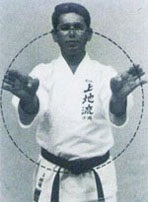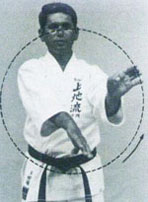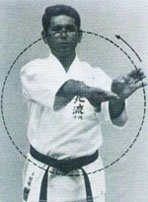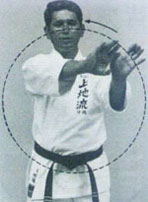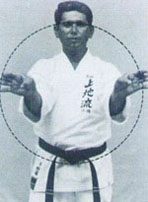

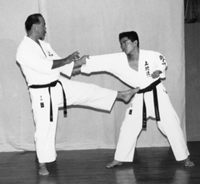
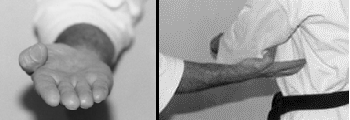

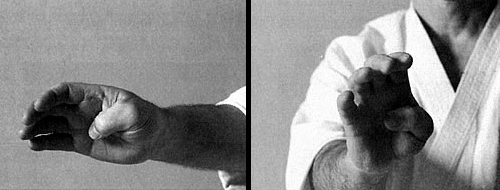
Uechi Ryu Karate is an Okinawan martial art that is based on a Chinese art that the style's founder "Uechi Kanbun" referred to as "Pangainoon Ryu." The style contains movements of the tiger, dragon and crane.
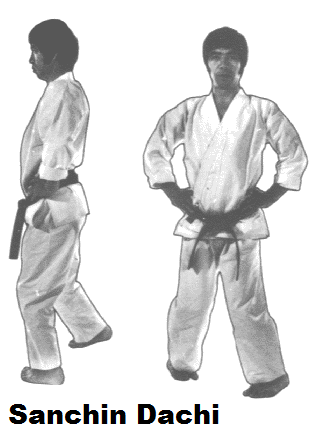
It should be noted that Pangainoon does not refer to a specific style of "chuan'fa" or Chinese boxing. Instead, it more likely refers to the mixture of training methods from Fujian, China that Uechi Kanbun combined to make his system of karate. In fact, Pangainoon refers to principles common to all martial arts. These include: "goho" (Jap. Lit. 'Hard method'), "juho" (Jap. Lit. 'Flexible method') and "gojuho" (Jap. Lit. 'Hard / flexible method'). Examples of goho or hard method include: Tiger boxing (Jap. Tora Ken), Great Ancestor boxing (Jap. Tai So Ken), and Lion boxing (Jap. Shi Ken). Examples of gojuho or hard / flexible boxing include: White crane (Jap. Haku Tsuru Ken) and examples of the Juho or flexible method include: Shaolin Flower Boxing (Jap. Shorin Hana Ken), and Crane boxing (Jap. Tsuru Ken).
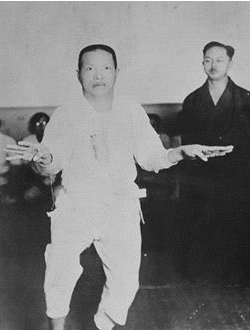
Uechi Ryu is often referred to as a hard Okinawan style that shares many similarities with the lesser Naha-Te styles of To'on Ryu and Ryuei Ryu. Uechi-Ryu, is a style that is supposed to be "half hard / half soft." The stances are mostly high, such as the pigeon toe stance (rather than long and deep as some Japanese styles). Techniques feature one knuckle punches, kicks using the big toe, spear hand that symbolically refer to Tigers Teeth and Crane's beak (moves emulating animal fighting techniques). Also included are a variety of open and closed hand techniques combined with angling and the use of circular blocks and grabs. There were no closed fist punches, in the original three kata of Uechi-ryu: Sanchin, Seisan and Sanseiryu. Open hand striking techniques focus on using the fingers to strike specific pressure points on the body.
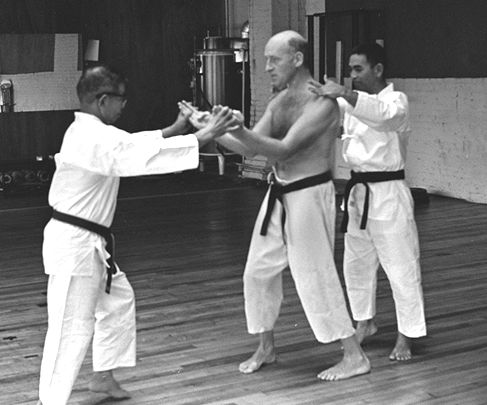
One of the spectacles of Uechi-Ryu training is "shime" testing. This is typically a two-person drill that serves as a way of evaluating a practitioner's ability to apply the strategies and concepts "Sanchin kata". The thought behind this type of testing is for the person being tested, to be placed under a strain, to see how well they can maintain their structure / stance. To do this, "shime" testing is conducted. The person being tested performs "Sanchin kata". The other person, or persons, test the person performing "Sanchin". The testing consists of striking the practitioner's body with the intent of discovering weak points within the structure. The overarching idea, is that the practitioner will be able to incorporate corrections and eliminate the weakness. To gather some perspective around the idea of shime, take a look at the word. Shime translates to mean: to lock, tighten, or shut. This word is used in regard to the practitioner's ability to lock the body down, to tighten, and to shut off the areas of vulnerability. Shime is all about the performer of the kata. It is probably this testing / training that make people believe Uechi-Ryu is a "hard" style.
In contrast to the more linear styles of karate based on Okinawan Shuri-te or Tomari-te, Uechi-Ryu's connection with Chinese Nanpa Shorin-ken (Southern Shorin Style) means the former shares a similar foundation with Naha-Te. As such, Uechi-Ryu is heavily influenced by circular, flowing motions which is representative of its Fujian, China roots.
The movements and techniques previously mentioned are quite reflective of Uechi-Ryu's Pangainoon roots.
The translation of "Pangainoon" is: "Strike hard, and retreat swiftly". This translation aptly
descirbes the core of the style. In fact, it has been stated:
sense techniques aimed at winning a fight, not in excelling at the "sport" of karate.
- Ihor Rymaruk,Hachi Dan,8th Degree Uechi-Ryu Kokusai
